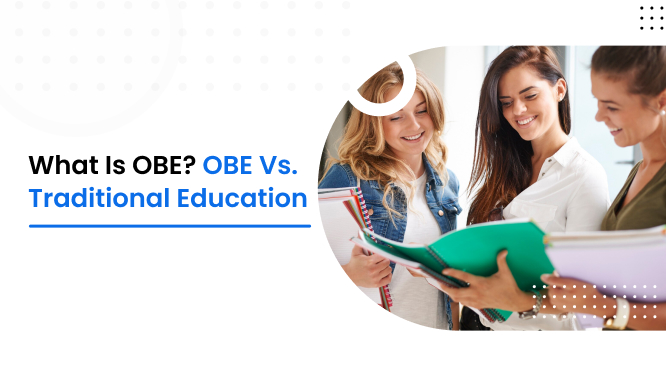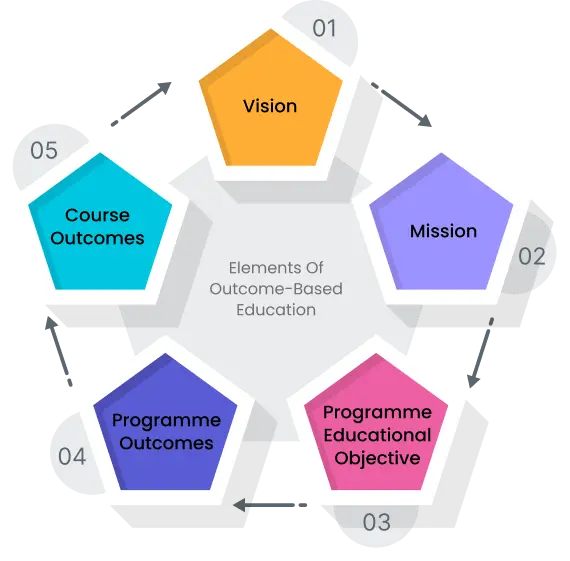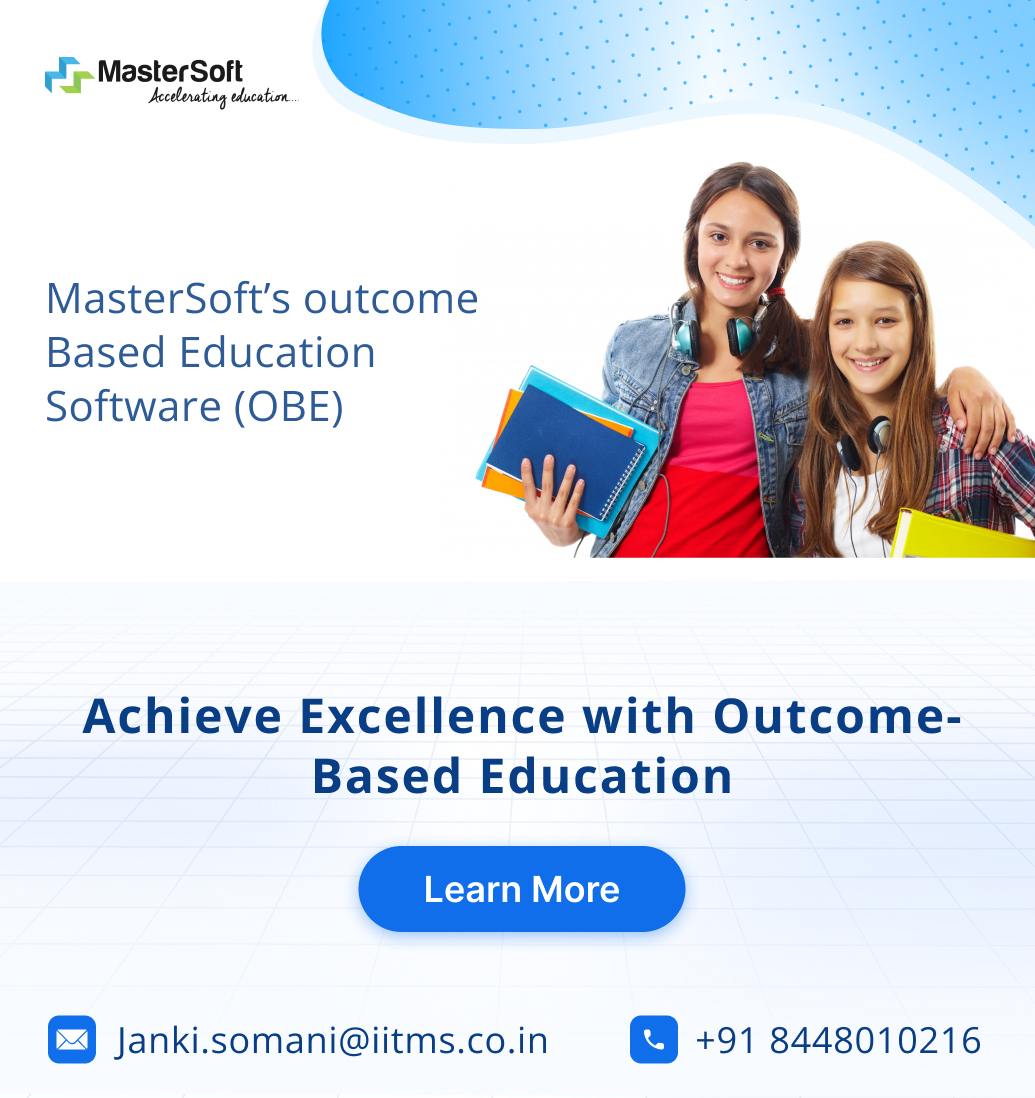
What is OBE? OBE vs. Traditional Education
What is OBE? OBE vs. Traditional Education
Rushing to complete the syllabus and textbook-oriented learning is core to the traditional education system, leading to fragmented learning outcomes. While some succeed at attaining academic excellence, others struggle to keep up the pace.
A gradual shift towards outcome-based education (OBE) has been the latest trend, transforming the teaching and learning systems. The focus is on the outcome or goals of a particular course, which helps to clarify the learning pathways. But is that it?
There’s more to it than meets the eye; hence, it is only fitting to take a look at the difference between traditional education and OBE.
What is outcome-based education?
An outcome-based education system is a strategic educational approach that establishes skills, knowledge, and competencies. Students would be able to demonstrate the skills and information that they learned by the end of the programme.
Hence, they have a clear idea about the ultimate academic objectives from an early age, which helps them follow a particular process. On the other hand, teachers can use the educational model to track students’s learning journeys.
Furthermore, they can identify the common problem areas of individual students and assist them accordingly to overcome them. Also, establishing a competency-based learning standard is an integral part of the approach.
Significant Elements of Outcome-Based Education

OBE is a unique pedagogical solution that includes a few crucial components, which are as follows:
- Vision and Mission
- PEOs
- POs
- COs
Vision
The vision statement refers to the institute’s objective of enabling students to achieve educational goals, which also elevates the institute’s status and reputation. The institute strives to provide a comprehensive student support system.
Mission
The mission statement highlights the institute’s goal of students’s comprehensive development and high-quality teaching and learning in interdisciplinary studies. Also, it entails providing relevant skills and information to all students.
Programme Educational Objectives (PEOs)
PEOs are specific goals, qualities, and competencies that individuals must be able to demonstrate after the completion of the course. The institute and teachers ensure the fulfilment of the objectives through proper assessment and training.
Programme Outcomes (POs)
Programme outcomes, which experts also refer to as graduate attributes, are core skills that help individuals function effectively in particular fields. Some crucial POs are as follows:
- Problem analysis
- Investigation
- Individual and teamwork
- Project management and finance
- Communication skill
Course Outcomes (COs)
Course outcomes are clear statements that enable students to understand the core competencies of a particular course.
What is the difference between outcome-based education and the traditional education system?
| Traditional Education System | Outcome-Based Education |
|---|---|
| It places emphasis on syllabus completion and textbook knowledge. | OBE is a goal-oriented education approach. |
| Teacher-centric methodology is dominant in the classroom. | Student-centric methodology, wherein the focus is on practical and experiential learning. |
| Rote memorization and passive learning are common in the traditional education system. | OBE emphasises practical learning, so it encourages students to participate in experiential learning activities. |
How is Outcome-Based Education Different from the Traditional Education System?
1. Curriculum Design and Structure
Curriculum is a significant guiding source that educators utilise to teach students and conduct regular classroom sessions. However, the traditional education system’s curriculum does not live up to current standards.
In contrast, the OBE curriculum is flexible, allowing the institute to alter and draft it according to the needs of courses and programme requirements. In fact, the restructuring and remodelling help to update the course accordingly.
Furthermore, the curriculum drafters collaborate with experts, academicians, and teachers to include appropriate modules, activities, and assessments. Therefore, students learn the necessary skills, knowledge, and core competencies.
2. Higher Scalability
One can argue that despite the inherent defects of the traditional education system, it has generated many successful individuals in various fields. Nevertheless, unequal learning outcomes are the byproduct of such an education structure.
Furthermore, summative assessments are the primary way to track progress in such a system. Therefore, teachers have limited or no way of tracking their individual learning progress, so many continue to lag.
On the contrary, after implementing OBE within a regular or e-learning class, they can track all students’ academic progress. In fact, teachers can obtain various data on monthly or weekly attainments, student learning reports, etc.
Consequently, they can obtain an in-depth analysis of the student's performance from the beginning to the end of the course. Also, they can determine whether or not there has been any growth pertaining to NBA standards.
3. Better assessment methods
Studying for the sake of scoring sufficient or high marks on the tests has been the top priority in the traditional education system. It only serves to check the subject knowledge of students and has no way to check their understanding levels.
With OBE, teachers can implement outcome-based assessments that assess a student’s thinking capability, concept understanding, etc. Moreover, it can include traditional examination methods as well as unique assessment tools.
For example, outcome-based assessments measure student learning outcomes and provide an overview of course content and goals. Besides, teachers can implement and check portfolios, projects, or simulations through LMS Software.
Additionally, they can assess students’ abilities, such as:
- Critical thinking abilities
- Problem-solving skills
- Creative thinking abilities
- Knowledge acquisition
4. Technology-Enabled Education
Lectures, textbooks, paper-and-pencil-based tests, etc. are key aspects of the traditional education system. However, the modern education system has moved beyond conventional methods to keep up with the ever-evolving learning requirements.
Therefore, that is where technological integration is instrumental in assisting teachers in employing new and unique methods in the classroom. For example, conducting e-learning sessions that align with OBE goals is one of the primary strategies.
Besides, incorporating technological tools provides educators with learning solutions that help streamline administrative activities. What’s more, teachers get a modern mechanism to monitor students’s progress.
5. The Distinguished Evaluation System
Getting 99 or 95 out of 100 or getting an A+ in all subjects has been remarked as the ultimate academic accomplishment. But what about the students who get less than the highest marks or score average or below average in exams? Are they academically poor? Are they failures?
Highlighting these questions is imperative, especially when the traditional education system equates high marks with intelligence. On the other hand, low-scoring students get tagged as underperformers with little or no other capabilities.
The outcome-based education evaluation system is distinctive in the sense that it does not evaluate students from worst to best. In fact, it adheres to a flexible evaluation system that functions at different levels.
Teachers use rubrics, which provide a clear and consistent method of evaluating students’s performance. Additionally, it helps to confirm whether the assessments align with course outcomes and assessment criteria.
Wrapping It Up,
The traditional education system entails outdated and one-dimensional approaches that fail to meet ever-evolving learning needs. Adopting new and unique pedagogical approaches is a smart move, especially when they lead to better learning outcomes.
Before applying any approaches, reviewing the key differences between the two will lead to seeing the obvious advantages. For instance, outcome-based education provides flexibility to draft curriculum and establish programme and course outcomes.


